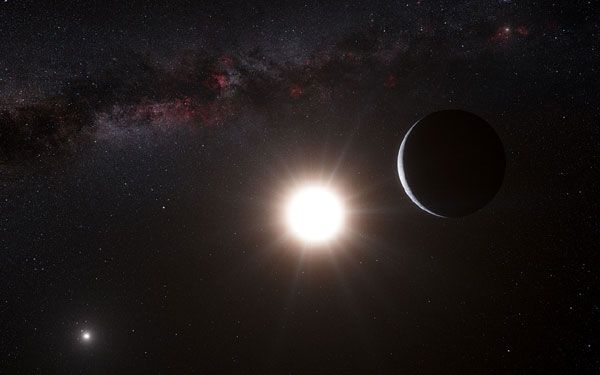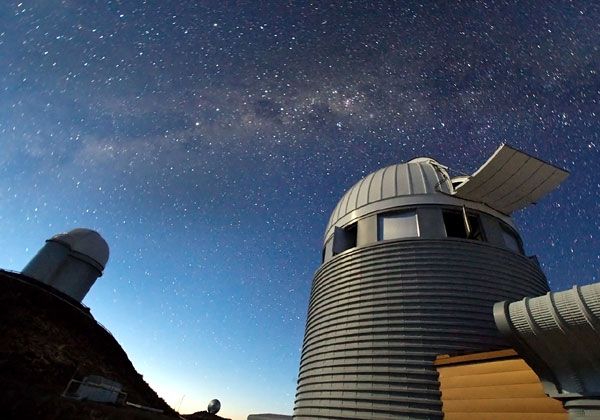
ESO / L. Calçada / Nick Risinger (skysurvey.org)
Exoplanet Update... I usually title these posts "Kepler Update", but since the prolific NASA space telescope wasn't involved with this recent awesome discovery, things will be different this time around...
(By the way, James Cameron's Avatar just came one step closer to reality. All we need to find now is a moon orbiting the Alpha Centauri B planet that's just like Pandora.)
****
NASA Statement On Alpha Centauri Planet Discovery (Press Release)
WASHINGTON -- The following is a statement about the European Southern Observatory's latest exoplanet discovery from NASA's Science Mission Directorate Associate Administrator, Dr. John Grunsfeld.
"We congratulate the European Southern Observatory team for making this exciting new exoplanet discovery. For astronomers, the search for exoplanets helps us understand our place in the universe and determine whether Earth is unique in supporting life or if it is just one member of a large community of habitable worlds. NASA has several current and future missions that will continue in this search.
"An example is NASA's Kepler mission. It was specifically designed to survey a specific region of our Milky Way galaxy to detect Earth-size and smaller planets in or near the habitable zone -- that region around a star where it is theoretically possible for a planet to maintain liquid water on its surface -- and determine the fraction of the hundreds of billions of stars in our galaxy that might have such planets. Kepler works very differently from HARPS. Rather than detecting the wobble in the host star, Kepler detects the slight dimming of a star when a planet passes in front of it.
"NASA's Hubble and Spitzer space telescopes have contributed to the study of exoplanets. Using their photometric and spectroscopic sensitivity, these space telescopes have made the first steps in characterizing the atmospheres of planets around other stars. They can only do this when the exoplanets pass serendipitously in front of its star, allowing the space telescope to study light that has filtered through the planet's atmosphere.
"NASA's James Webb Space Telescope (JWST) will provide a unique facility that will serve through the next decade as the mainstay for characterization of transiting exoplanets. The main transit studies JWST will be able to undertake are: discovery of unseen planets, determining exoplanet properties like mass, radius, and physical structure, and characterizing exoplanet atmospheres to determine things like their temperature and weather. If there are other planets in the Alpha Centauri system farther from the star, JWST may be able to detect them as well through imaging.
"NASA is also studying two medium-class exoplanet missions in our Explorer program, and in the spring of 2013 will select one of them to enter development for flight later in the decade."
Source: NASA.Gov
****

ESO / Iztok Bončina

No comments:
Post a Comment